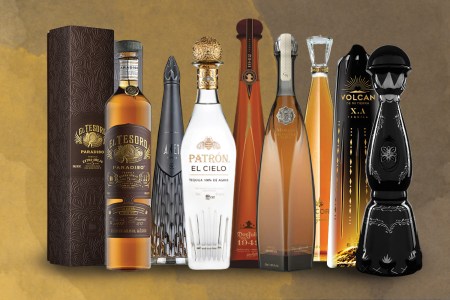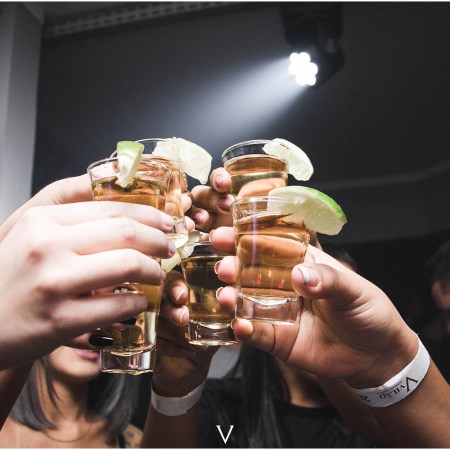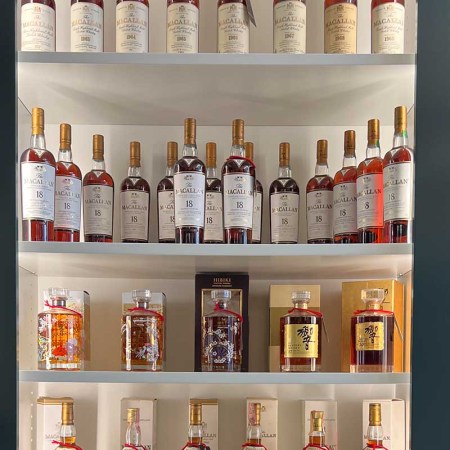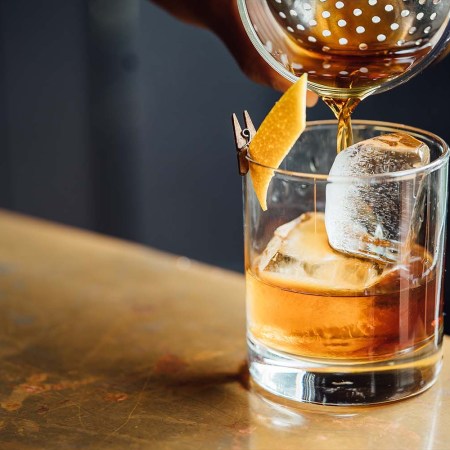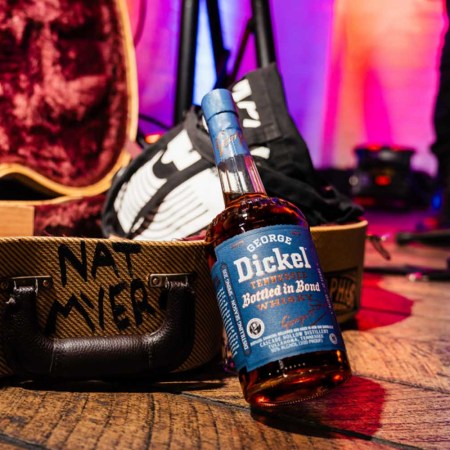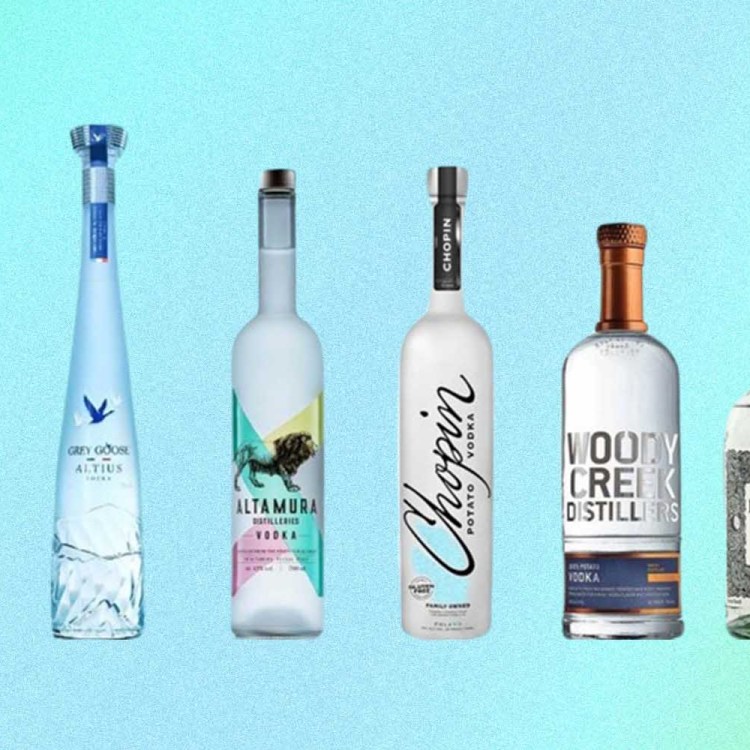Will Lowe, a UK’s Wine and Spirits Education Trust judge, reckons it was about 15 years ago when he had his revelation. When visiting a distillery, he was struck by the idea that even those spirits considered to be universal, maybe even rough and ready, could not only be different from one another, but that one of them could clearly be better.
“That was an idea everyone then took for granted with wine, Cognac, Champagne and whisky,” Lowe says. “But the assumption was that it couldn’t be applied to, say, a gin. Gin was just gin — they were all made in much the same way, so the result, inevitably, was generic.”
And it wasn’t helpful for the consumer. “What was happening was very unusual [in the drinks world]: the products were being determined by the maximum amount a consumer was perceived as being happy to spend,” Lowe says. “It was a slightly contrarian but important question to ask — ‘What happens if you use better ingredients?’”
The answer would arrive in the form of the distillery Lowe founded, Cambridge Gin, and its Anty Gin, weighing in at a tidy $280 a bottle. It’s made using fresh (and local whenever possible) ingredients and techniques like vacuum distillation, which entails boiling by pressure rather than heat, allowing for a greater range of ingredients. More and fresher ingredients mean more skill is required of the blend. The upshot is now it’s not just a gin, but a “premium” gin.
Cambridge was and is far from being alone, of course. One of the clearest trends in spirits of the last decade has been premiumization, the upgrading of gins, vodkas, tequilas, rums, ryes and even herbal distillations like absinthe and schnapps. And drinks makers aren’t stopping at premium — the luxury spirits category has been followed by makers describing themselves as super-premium and even ultra-premium.
Certainly, prices can be eye-watering. While many are in the $100 to $200 range, a Clase Azul Dia de Muertos edition tequila will cost you a few thousand, and a bottle of Jam Jar Gin’s Morus LXIV is around $5,000. You can pick up a bottle (with some effort) of the “super premium” Ley.925 Tequila for $3.5 million, though most of that is the cost of the platinum and diamond from which the bottle is made.
And yet, such products sell, presumably, in limited volumes. Hasan Bakir, economist for the Distilled Spirits Council, which advocates for spirits in the United States, says you can put them into the broader trend for more premium products generally — just look at what happened to coffee or salt or other goods once considered commodities.
“There has also been a notable trend towards spirits that embrace innovation and sophistication, while the emergence of craft distilleries across the country and the popularity of distillery tourism have also heightened awareness about super premium spirits,” Bakir says.
And then came the pandemic, with people in lockdown and ready to treat themselves to something a bit special. Lowe reckons there’s now a wider, more educated audience drinking all spirits with the same focus and appreciation as they do wine. “For a long time, the industry has been insisting that people won’t drink a gin or a vodka at such-and-such a price,” he says. “Then you win some gold medals and people pay attention.”
Michele Tuveri, head of spirits sales (EMEA) for Constellation, the drinks group that owns Modelo, Corona and Casa Noble tequila, argues that premiumization has been a product of increased consumer knowledge about spirits, made possible by the internet. “Consumers want to delve much more deeply into what they’re drinking,” he says, which explains the newfound amount of information provided on bottle labels. “You didn’t see that a decade ago because most drinkers just didn’t care. It’s more about the actual liquid now and less about the marketing, though you still do see a lot of products basically all about putting the drink in some nice crystal.”
David McWilliam, who’s behind the UK’s Padstow Distilling Co, reckons that you still need both liquid and packaging (aka shelf appeal) to make a claim about being premium. “It’s the recipe that’s all important,” he says. “To make a premium product, you need complete control over the liquid, from start to finish.”

Padstow’s Navy Gin — which at around $75 is two to three times the price of a larger bottle of Tanqueray — won Double Gold at the 2022 World Spirits Competition in San Francisco. “As with wine, people can say [premium spirits] are over-complicating what are essentially simple liquids, but it’s really a rich, intricate mix that gives a spirit its own definite style,” McWilliam says.
Twenty years ago, Bacardi acquired a vodka brand by the name of Grey Goose, which had been launched only seven years prior. The company perhaps saw the winds of change towards more upscale spirits. Grey Goose may not have been the first to try this position — arguably that’s what Absolut was doing when it launched internationally in 1979 — but the brand founders identified the scope to take what was traditionally an unpolished spirit and give it a luxury spin.
“At that time, there was no premium vodka, only ‘vodka,’” says Martin de Dreuille, the brand’s global VP of marketing. “It was considered a clear, odorless grain spirit. It’s because of this that so many people thought the concept of a luxury vodka was crazy. The idea was to create a new product that would completely change the existing perception of vodka. When it comes to the ceiling for premiumization, I think the sky is the limit.”
But can this trend for premiumization really keep on going indefinitely? Sukvinder Javeed launched her Sphynx tequila a decade ago, helping to reposition the spirit’s public image as something to sip, not something to shoot using salt and lime to disguise poor quality. She says her brand is now contending with a market in danger of getting too crowded with sub-standard launches trying to cash in on the trend.
“There’s been a big boom in sipping tequilas, but you only have to taste a lot of them to know they’re not what they claim to be — they just have big budgets behind them and a nice bottle to push a ‘luxury’ narrative,” she says. “There’s a lot of smoke and mirrors in the premium spirits market now. That means drinkers have to get better educated about it. They’ll have to take an increasingly conscious approach to what they drink to get value for money.”
The 10 Best Luxury Tequilas for Sipping
And also, what exactly is a luxury tequila?The stats from the go-to drinks market analysts IWSR suggest that, on the one hand, we’re drinking less high-volume, low-value beverages like beer and wine, and more high-value spirits, in part maybe out of health-consciousness. On the other hand, growth is slowing as economic conditions make us more price-conscious again, with the top end of the market now in gentle decline. Those who once considered a premium spirit to still be what Bakir calls “an affordable simple pleasure” have maybe traded down, temporarily perhaps.
Given just how many premium spirits there are currently, Tuveri suggests we might be moving into a phase in which more upmarket spirit choices are increasingly aspirational, about chasing exclusivity for one’s Instagram feed. And according to IWSR, the premium/super-premium market is being buoyed by what it calls a “significant minority of super-high spenders.”
In other words, the playing field has leveled again — albeit at a much higher level, with even mass-market products having to up their game — so we’re back to being wowed by marketing. “I think premiumization may have peaked,” Tuveri says. “I mean, how much better tasting can any particular spirit be? After that, it just becomes about making fewer bottles available. Or some nice crystal.”
That idea argues against Bakir’s claim that “price generally reflects the quality of ingredients and production methods.” Price, of course, can also be part of a product’s marketing, especially to the majority of drinkers with an average palate. “I don’t think the claim can be made that a $2 million spirit is twice as good as a $1 million bottle,” says Lowe, who is developing a gin using botanicals from the garden of one Charles Darwin. “Outside the world of FMCGs [fast moving consumer goods] and inside the spirits world, there’s a separation of ideas of quality and value.”
“Of course,” he adds, “while there isn’t infinite room for improvement in a gin or a vodka, I still find the idea that the best of either has already been made an abhorrent one.”
Join America's Fastest Growing Spirits Newsletter THE SPILL. Unlock all the reviews, recipes and revelry — and get 15% off award-winning La Tierra de Acre Mezcal.

